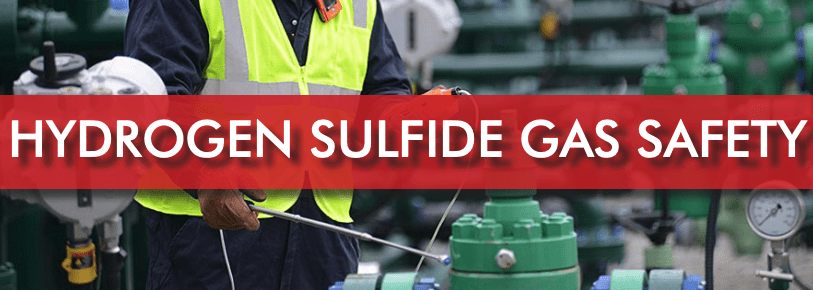HYDROGEN SULFIDE GAS SAFETY

Cogbill Construction Weekly Safety
Tuesday, September 15th, 2020
Hydrogen Sulfide (H2S) is a naturally occurring gas that is dangerous to your health and has the potential to cause death. H2S can be produced from decaying organic matter such as sewage sludge, liquid manure, sulfur hot springs, and natural gas. Industries that use H2S or it is by-product from processes include: petroleum production and refining, wastewater and sewage treatment, mining, agriculture, textile manufacturing, hot asphalt paving, food processing, and paper and pulp processing.
Health effect from hydrogen sulfide vary from concentration amounts:
0.01-1.5 ppm: rotten egg smell is first noticeable
2-5 ppm: nausea, headaches, and tearing of the eyes may be caused from prolonged exposure
20 ppm: dizziness, poor memory, irritability, fatigue, headache may occur
50-100 ppm: eye irritation and respiratory tract irritation after hour long exposure
100 ppm: eye irritation, coughing, loss of smell after 2-15 minutes. Difficulty breathing and drowsiness after 15-30 minutes. Throat irritation after 1 hour. Death may occur after 48 hours.
100-150 ppm: loss of smell
200-300 ppm: Marked conjunctivitis and respiratory tract irritation after 1 hour
500-700 ppm: Collapse in 5 minutes. Severe eye damage in 30 minutes. Death after 30-60 minutes.
700-1000 ppm: Rapid unconsciousness withing 1-2 breaths. Death withing minutes.
1000-2000 ppm: Near instant death.
In order to prevent workers from going into areas with hazardous amounts of hydrogen sulfide, employers must have safety controls into place. First, the work place needs to evaluated to determine which processes and areas may release H2S. Testing for H2S should be conducted prior to as well as while preforming activities, using an electronic meter that detects the gas. Controls should be set into place by using exhaust and ventilation systems, executing safety training for workers, establishing proper rescue procedures, and the use of proper PPE if workers must perform in areas exposed to H2S.




